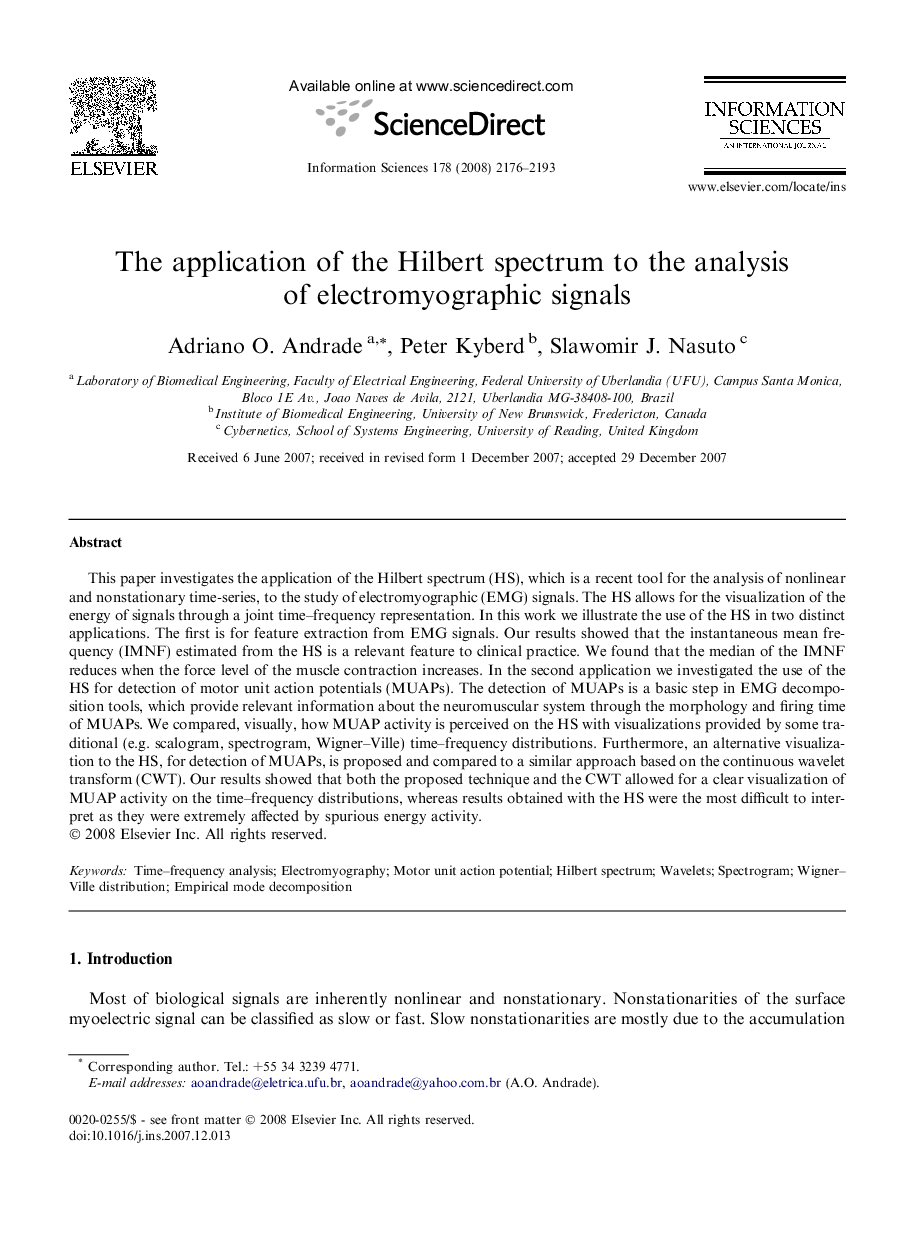| Article ID | Journal | Published Year | Pages | File Type |
|---|---|---|---|---|
| 394947 | Information Sciences | 2008 | 18 Pages |
This paper investigates the application of the Hilbert spectrum (HS), which is a recent tool for the analysis of nonlinear and nonstationary time-series, to the study of electromyographic (EMG) signals. The HS allows for the visualization of the energy of signals through a joint time–frequency representation. In this work we illustrate the use of the HS in two distinct applications. The first is for feature extraction from EMG signals. Our results showed that the instantaneous mean frequency (IMNF) estimated from the HS is a relevant feature to clinical practice. We found that the median of the IMNF reduces when the force level of the muscle contraction increases. In the second application we investigated the use of the HS for detection of motor unit action potentials (MUAPs). The detection of MUAPs is a basic step in EMG decomposition tools, which provide relevant information about the neuromuscular system through the morphology and firing time of MUAPs. We compared, visually, how MUAP activity is perceived on the HS with visualizations provided by some traditional (e.g. scalogram, spectrogram, Wigner–Ville) time–frequency distributions. Furthermore, an alternative visualization to the HS, for detection of MUAPs, is proposed and compared to a similar approach based on the continuous wavelet transform (CWT). Our results showed that both the proposed technique and the CWT allowed for a clear visualization of MUAP activity on the time–frequency distributions, whereas results obtained with the HS were the most difficult to interpret as they were extremely affected by spurious energy activity.
